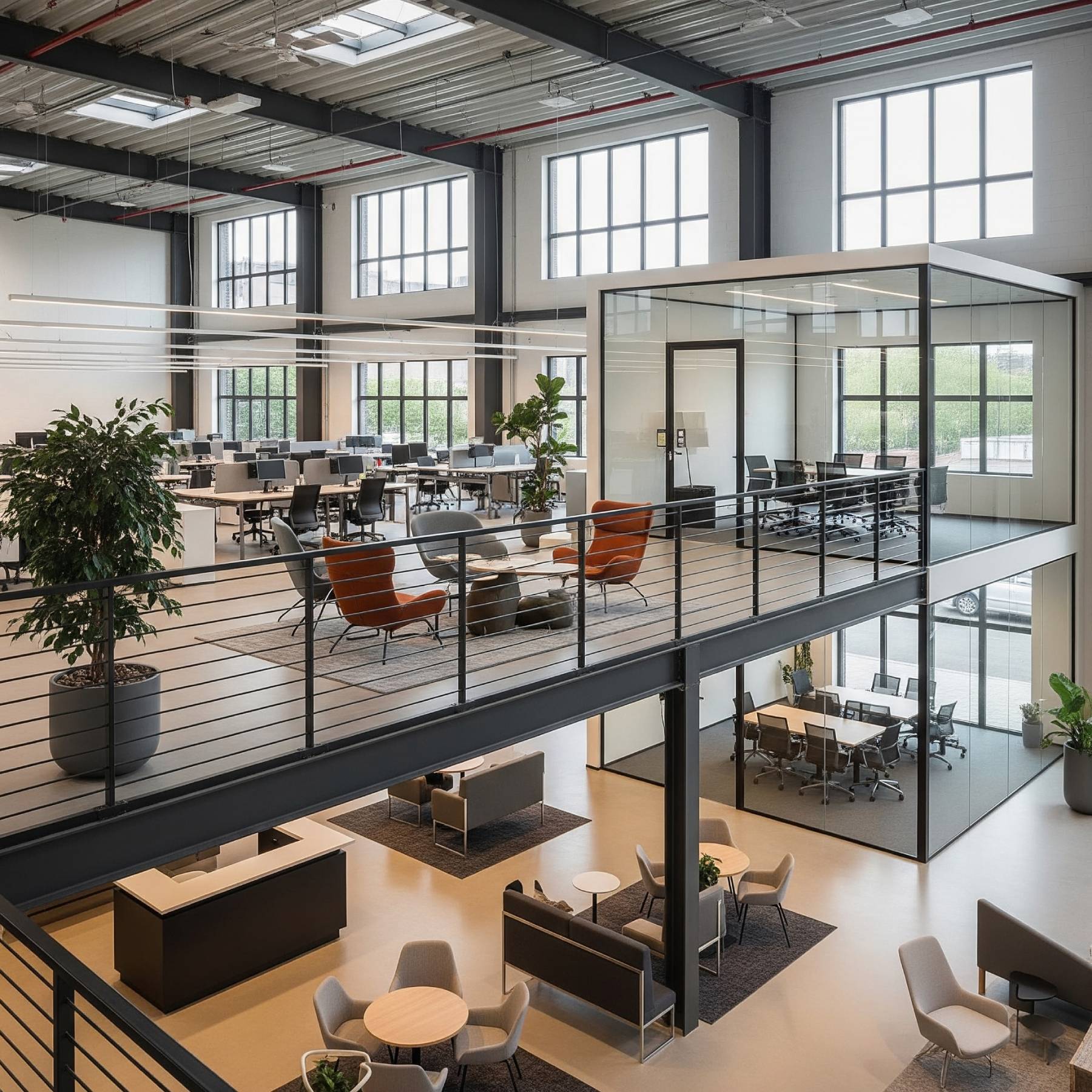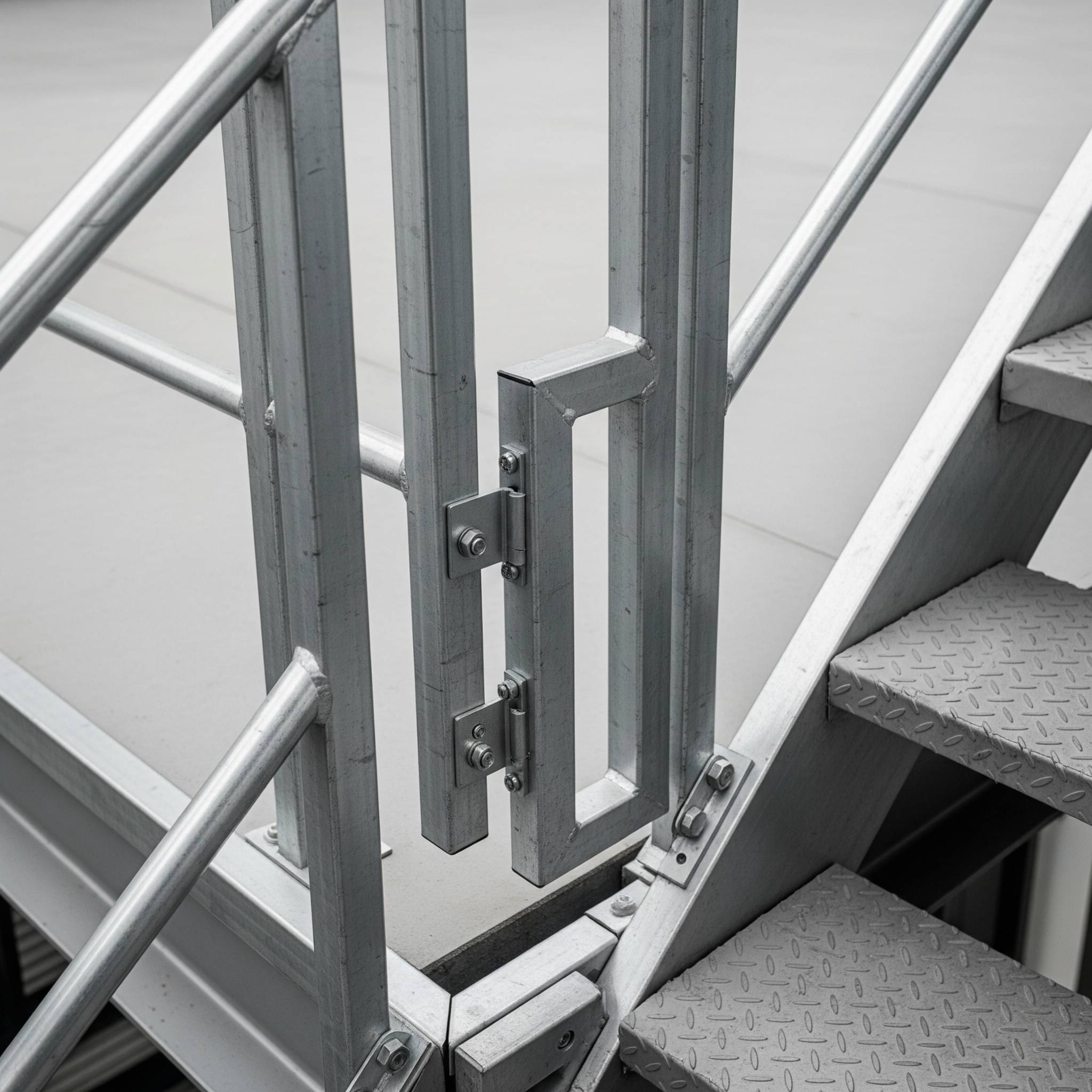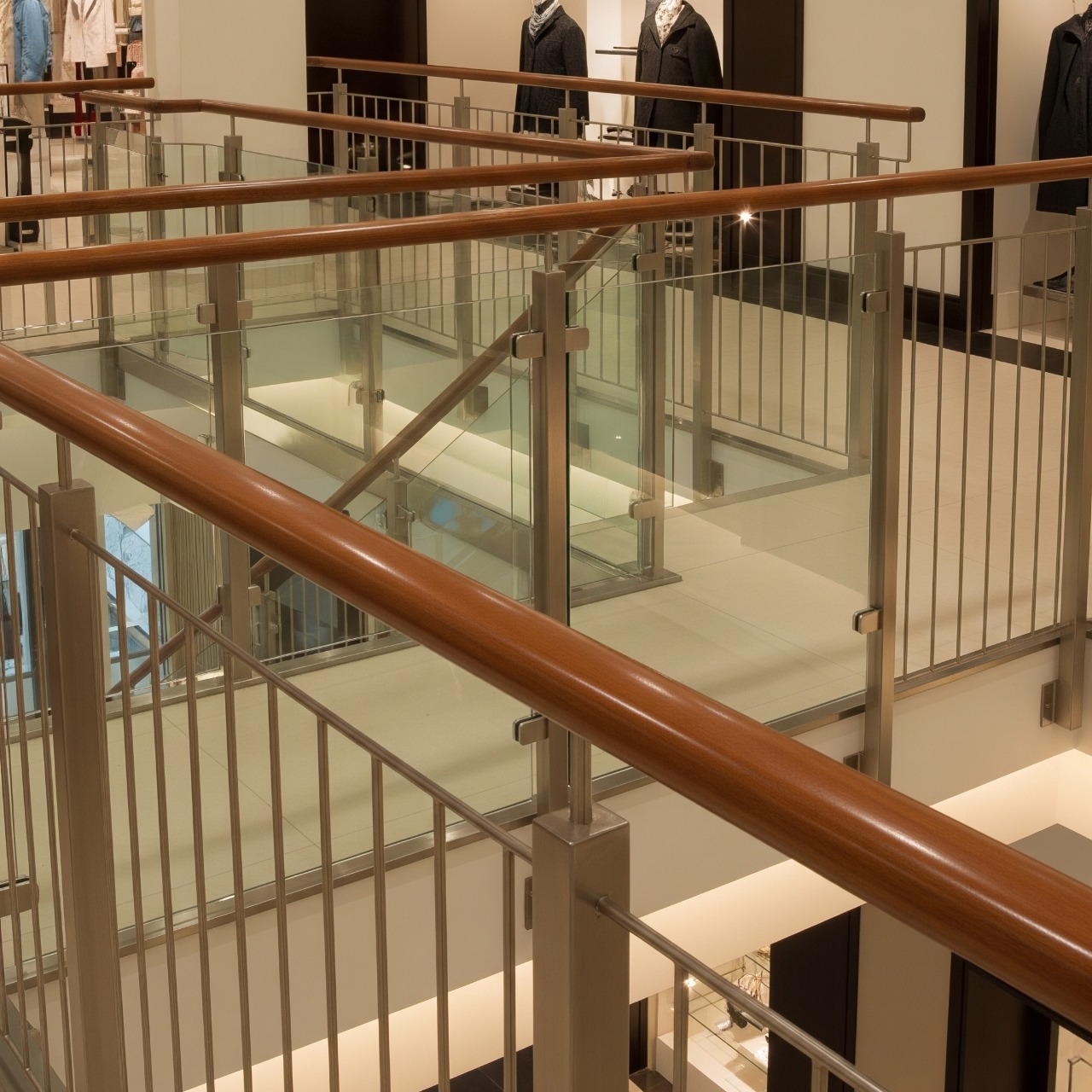Commercial Mezzanines: Open-Plan vs. Enclosed—Which Works Best?

When planning a mezzanine for a commercial space, one of the most important decisions you’ll make is whether to go open-plan or enclosed. Both styles offer unique benefits and limitations, depending on the function of the mezzanine, the layout of the base floor, and how you want people to interact with the space.
Let’s explore how each design works — and how to choose what fits your space best.
Open-Plan Mezzanines: Space, Light, and Visibility
Open-plan Mezzanines are elevated platforms that flow visually with the rest of the space. They have minimal walls, often with only guardrails or glass balustrades for safety. These mezzanines are common in showrooms, creative offices, and retail environments where openness is a design advantage.
Pros of Open-Plan Mezzanines:
- More natural light: Since open mezzanines don’t block windows or skylights, they allow light to reach deeper into the space.
- Visual connection: Workers or customers can see across floors, creating a sense of transparency and teamwork.
- Flexibility: These spaces adapt well to changing layouts — ideal for coworking or dynamic commercial use.
- Air circulation: Open areas promote better airflow, helping with HVAC efficiency.
Things to Consider:
- Noise travel: Sound moves freely in open layouts, which can reduce privacy.
- Limited privacy: Not ideal for confidential work or meetings.
- Storage visibility: If used for storage or operations, the exposed nature may look cluttered.
Enclosed Mezzanines: Privacy, Security, and Control
Enclosed Mezzanines are designed with partial or full-height walls, doors, or panels that create a distinct separation from the surrounding area. They’re often used in commercial settings that require confidentiality, sound control, or environmental separation — like private offices, meeting rooms, or server/data hubs.
Pros of Enclosed Mezzanines:
- Acoustic insulation: Greatly reduces noise from or to the rest of the building.
- Privacy and security: Make mezzanines ideal for executive offices, HR departments, or inventory control rooms
- Climate control: Easier to heat/cool separately from the main space.
- Cleaner appearance: Enclosures can hide operational mess, machinery, or tech installations.
Things to Consider:
- Reduced natural light: Enclosing a space can block off windows or skylights.
- Ventilation challenges: May require separate HVAC zoning.
- More permanent: Changes or reconfigurations can take longer and cost more.
Which Should You Choose?
The right answer depends on your function, flexibility, and floor layout:
- For collaborative offices, retail displays, or dynamic environments → go open-plan.
- For office meeting rooms, secured departments, or environments requiring quiet or privacy → choose enclosed.
You can also combine both, using partial enclosures with glass or sound panels, offering privacy without total isolation.
Final Thought:
Both open-plan and enclosed mezzanines have a place in commercial architecture. It’s not just about style — it’s about how your space works. Think about the kind of activity the mezzanine will support and how people will use it daily. With the right approach, either type can elevate your commercial environment — both literally and strategically. Want guidance choosing the right mezzanine for your space? Get in touch — we’re here to help.




